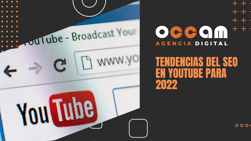Index Content
For a content strategy to be sustainable and bring benefits to your company, you must first create a long-term plan
Sometimes, when we discover a marketing action that fits our goals, we are in a hurry and want to start working on it immediately. But the truth is that this is no guarantee if it is not preceded by a well thought-out planning process. Of course, the same is true for a content strategy. Before you start creating materials in different formats or writing articles on the first topics that come to mind, you should think long term.
Planning your content marketing campaign with an eye to the future facilitates the efficiency and sustainability of the project and avoids problems during its development, such as the creation of identical content or a lack of coherence and thematic unity. In this sense, it is not enough to design a content creation framework, but you should create a long-term planning. Therefore, if your company's goal is to establish a successful and long-lasting content strategy that delivers subtle but consistent benefits, keep reading this article.
Benefits of long-term planning
Incorporating a content strategy in your company has some very relevant benefits to consolidate the reputation and the relationship of your brand with users. Similarly, if we specify a little, the long-term planning of these campaigns also offers advantages to take into account. Let's see them one by one:
- it sets a direction for the content. By choosing a priori the general (and some specific) topics on which the content will focus, you will be creating a concrete roadmap.
- keeps order: Planning helps staff and teams involved to know their tasks, deadlines, etc. It also ensures that marketing objectives are aligned with overall business goals. It also helps to anticipate problems and provides the ability to deal with obstacles or spontaneous initiatives in a more responsive way.
- it improves the profitability of the company. Planning for the long term means deciding which keywords you want to rank well in search engines to position your company as a reference in the sector. In this way, your content will focus on feeding those topics to offer a more complete and educational experience to the user (which SEO will value positively). Therefore, the greater the presence of your brand in search engines, the more profitable the campaign will be.
- If your company is committed to this methodology, it is essential to create and plan content toenrich all stages of the buyer's journey to encourage the final conversion (we will discuss this step in more detail later).
3 steps to planning a long-term content strategy
If you want your company to benefit the most from launching a long-term content marketing strategy, follow the following steps one by one:
-
set goals that meet the SMART criteria
The first thing you need to set out in your planning is your campaign objectives. What do you want your brand to achieve through content creation in the long term? Answer this question with your buyer persona and buyer journey in mind. This way, every action you take will be linked to a campaign objective, but also to the company's main goal.
In this sense, setting marketing objectives helps you to direct the whole strategy, have a clear motivation, organise the campaign in a timely manner and optimise the efforts of the whole team. But, in order for all these elements to be aligned, it is essential that you write the objectives according to the SMART criteria:
- specific.
- measurable: measurable.
- attainable.
- relevant.
- timely.
Therefore, an example of a SMART objective would be: to get 1,000 visits to the blog per week over the next month. Thus, we can see that it is a company that has already consolidated its content marketing and wants to maintain a minimum number of weekly visits to its articles. Why? The final objective, in reality, is to get more contacts who, subsequently, become customers. As you can see, this specific objective (which meets the SMART criteria) leads us to a more general one within the campaign itself (getting more contacts), but also to the fundamental objective of the company (getting more customers and sales).
-
Conduct an audit of existing resources
Before starting to create content, it is necessary to check what resources the company has a priori. In this sense, there are two types of audits: one of content and the other of events.
- content audit: This is used to evaluate existing resources that are useful for attracting users' attention by looking in every corner of the company and organising content according to title, format, topic, link, stage of the buyer's journey, etc. In this way, you will find gaps and opportunities that will guide the planning and creation of content in the long term.
- event-based audit: In this case, the objective is to gather quality material for the company's future projects. Thus, the team in charge of managing each event can draw on content created by marketing staff that is thematically related to get the most out of it. Therefore, this audit should be classified according to general themes, themes for future materials and the campaign to which they belong. In other words, with this audit you will get ideas for creating long-term content that can be used in the organisation's scheduled events.
As you can see, assessing the company's existing resources allows you to find opportunities that benefit all departments.
-
identify the buyer journey of buyer personas and offer specific content for each stage
The last step in planning a long-term content strategy is related to two elements we have already seen above: the company's buyer persona and the buyer's journey:
- buyer persona. Content must be targeted to your company's target audience for there to be a real chance of conversion. But who is the buyer persona? It is a semi-fictional representation of the brand's ideal customer; the one for whom the company was founded. To establish this, you need to decide who they are through their demographic information, their goals and challenges, etc.
- buyer journey: Once you know your buyer persona, you can design their journey through content until they become a customer. To do this, create materials for each of the three stages: recognition (where you will resolve doubts), consideration (where you will offer solutions) and decision (where you will guide them step by step to move forward with the chosen solution). In the first phase, do not talk about your products and services: do it in the next two phases, taking advantage of the fact that users trust you and are looking to solve problems that your brand can solve.
Ultimately, planning a long-term content strategy means identifying what resources and materials your company needs and organising the work in a sustainable way.





